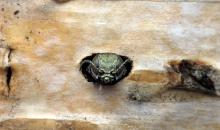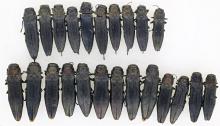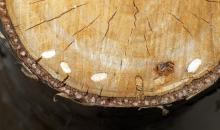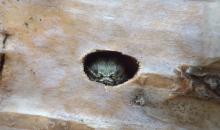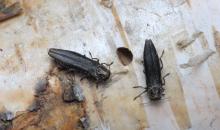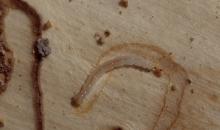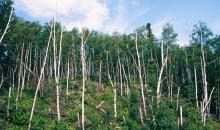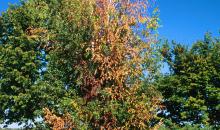Agrilus anxius(AGRLAX)
Photos
For publication in journals, books or magazines, permission should be obtained from the original photographers with a copy to EPPO.
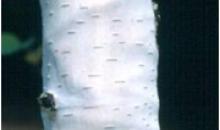
Externally visible bark ridges resulting from wound periderm growth over larval galleries
Courtesy: VL Muilenburg and DA Herms, Ohio Agricultural Research and Development Center, The Ohio State University, Wooster, OH, USA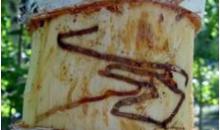
Serpentine larval gallery
Courtesy: VL Muilenburg and DA Herms, Ohio Agricultural Research and Development Center, The Ohio State University, Wooster, OH, USA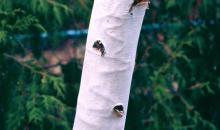
External view of callus tissue formed over a larval gallery. Photo taken in Moundsview (Minnesota, USA, 2005)
Courtesy: Steven Katovich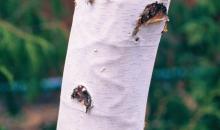
Callus tissue formed by the larval feeding gallery, visible on the main stem (birch). Photo taken in Moundsview (Minnesota, USA)
Courtesy: Steven Katovich
Dieback associated with bronze birch borer damage, on Betula
Courtesy: Whitney Cranshaw (Colorado State University)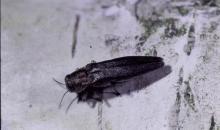
Adult on bark of birch tree (June 1987, Michigan, USA)
Courtesy: George Heaton (USDA Forest Service)
Infested birch showing top dieback, likely European white birch (Betula pendula). These trees were often planted as ornamentals in Michigan (September 1987, Michigan, USA)
Courtesy: George Heaton (USDA Forest Service)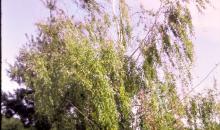
Infested birch with severe crown dieback, likely European white birch (Betula pendula). These trees were often planted as ornamentals in Michigan (September 1987, Michigan, USA)
Courtesy: George Heaton (USDA Forest Service)
Larval galleries on sapwood of birch tree, mostly galleries of 4th (last) larval instar (September 1987, Michigan, USA)
Courtesy: George Heaton (USDA Forest Service)

